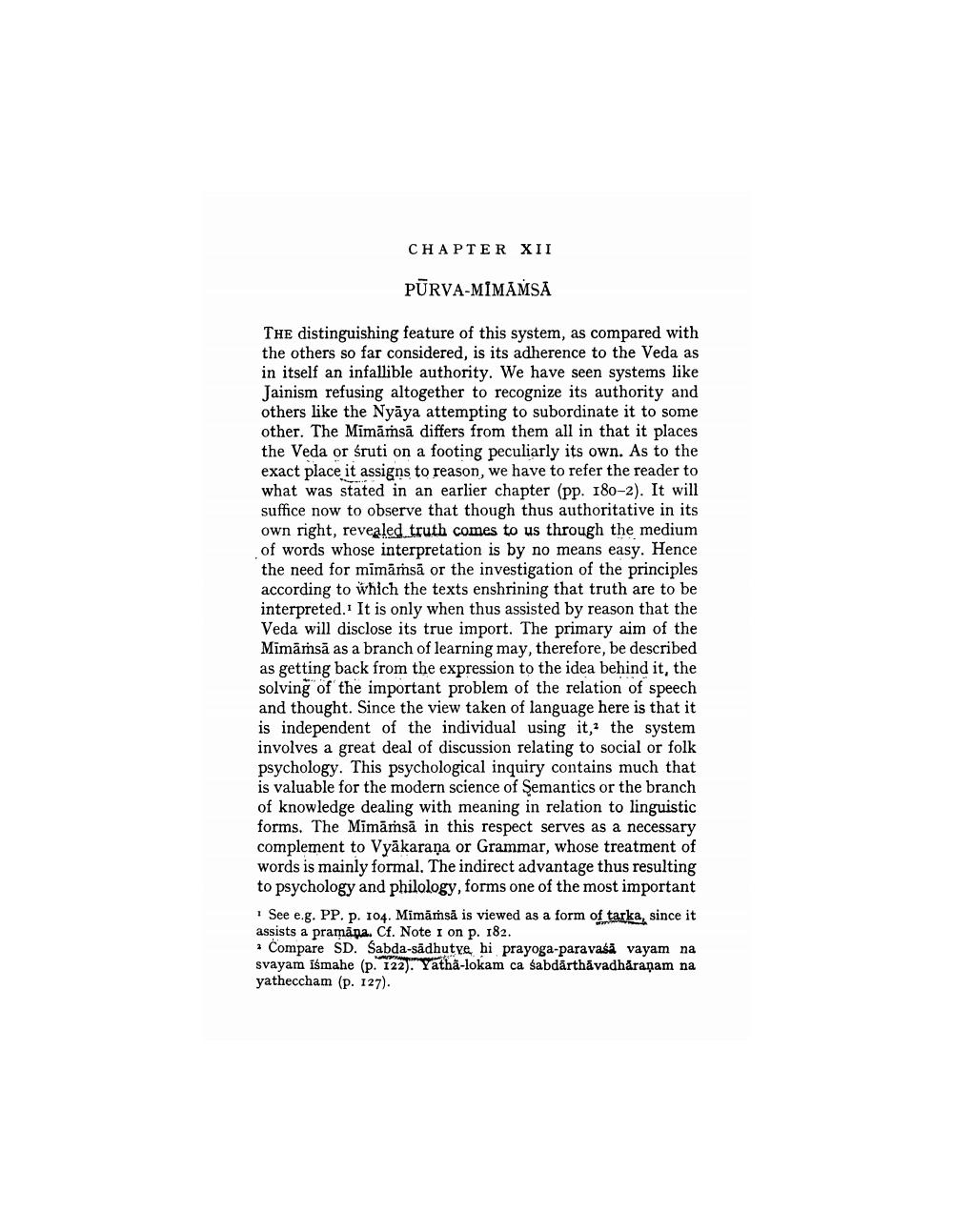________________
CHAPTER XII
PŪRVA-MIMAMSA
The distinguishing feature of this system, as compared with the others so far considered, is its adherence to the Veda as in itself an infallible authority. We have seen systems like Jainism refusing altogether to recognize its authority and others like the Nyāya attempting to subordinate it to some other. The Mimāṁsā differs from them all in that it places the Veda or sruti on a footing peculiarly its own. As to the exact place it assigns to reason, we have to refer the reader to what was stated in an earlier chapter (pp. 180-2). It will suffice now to observe that though thus authoritative in its own right, revealed truth comes to us through the medium of words whose interpretation is by no means easy. Hence the need for mimāṁsā or the investigation of the principles according to which the texts enshrining that truth are to be interpreted. It is only when thus assisted by reason that the Veda will disclose its true import. The primary aim of the Mimāṁsā as a branch of learning may, therefore, be described as getting back from the expression to the idea behind it, the solving of the important problem of the relation of speech and thought. Since the view taken of language here is that it is independent of the individual using it, the system involves a great deal of discussion relating to social or folk psychology. This psychological inquiry contains much that is valuable for the modern science of Şemantics or the branch of knowledge dealing with meaning in relation to linguistic forms. The Mimāṁsā in this respect serves as a necessary complement to Vyākarana or Grammar, whose treatment of words is mainly formal. The indirect advantage thus resulting to psychology and philology, forms one of the most important
See e.g. PP. P. 104. Mimämsä is viewed as a form of tarka, since it assists a pramāna. Cf. Note I on p. 182. * Compare SD. Sabda-sādhutve hi prayoga-paravasa vayam na svayam iśmahe (p. 122). Yatha-lokam ca sabdarthåvadharanam na yatheccham (p. 127).




